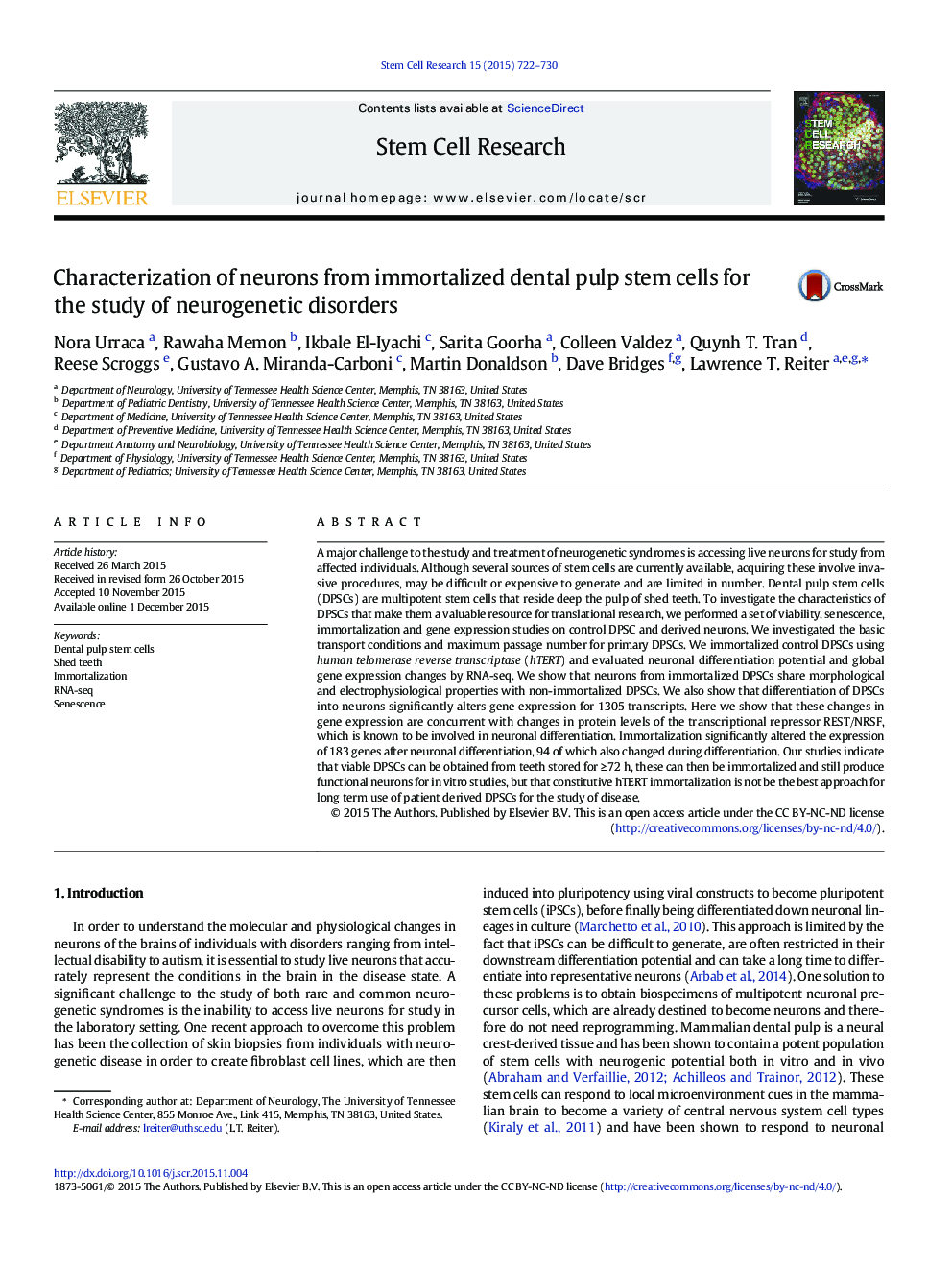| Article ID | Journal | Published Year | Pages | File Type |
|---|---|---|---|---|
| 2093914 | Stem Cell Research | 2015 | 9 Pages |
•Shed teeth can be stored at RT for days in media and still produce viable DPSCs.•Neurons can be made from hTERT immortalized DPSC as well as primary DPSCs.•Differentiation of DPSCs changes 1305 transcripts.•94 transcripts are affected by immortalization and differentiation.
A major challenge to the study and treatment of neurogenetic syndromes is accessing live neurons for study from affected individuals. Although several sources of stem cells are currently available, acquiring these involve invasive procedures, may be difficult or expensive to generate and are limited in number. Dental pulp stem cells (DPSCs) are multipotent stem cells that reside deep the pulp of shed teeth. To investigate the characteristics of DPSCs that make them a valuable resource for translational research, we performed a set of viability, senescence, immortalization and gene expression studies on control DPSC and derived neurons. We investigated the basic transport conditions and maximum passage number for primary DPSCs. We immortalized control DPSCs using human telomerase reverse transcriptase (hTERT) and evaluated neuronal differentiation potential and global gene expression changes by RNA-seq. We show that neurons from immortalized DPSCs share morphological and electrophysiological properties with non-immortalized DPSCs. We also show that differentiation of DPSCs into neurons significantly alters gene expression for 1305 transcripts. Here we show that these changes in gene expression are concurrent with changes in protein levels of the transcriptional repressor REST/NRSF, which is known to be involved in neuronal differentiation. Immortalization significantly altered the expression of 183 genes after neuronal differentiation, 94 of which also changed during differentiation. Our studies indicate that viable DPSCs can be obtained from teeth stored for ≥ 72 h, these can then be immortalized and still produce functional neurons for in vitro studies, but that constitutive hTERT immortalization is not be the best approach for long term use of patient derived DPSCs for the study of disease.
